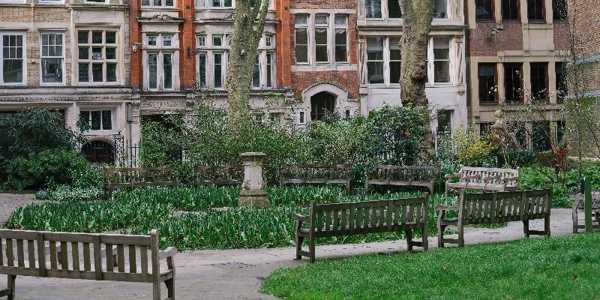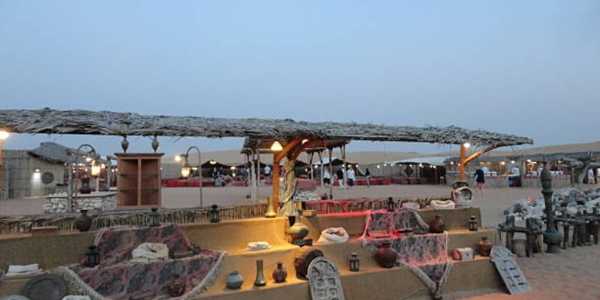28 Best Budget-Friendly Travel Activities To Try: Do More, Spend Less
Think travel requires deep pockets? Not even close. The richest experiences are often inexpensive (or even free) if you know where to look. Here's a deep, practical guide to turn small budgets into big memories—packed with budget travel activities, affordable trip ideas, and low-cost travel adventures that genuinely deliver.
What Actually Makes An Activity “Budget-Friendly”?
Before picking destinations or dates, understand the levers that make experiences inexpensive, often regardless of where you go.
Timing
Costs rise with crowds. Go early morning or on weekdays to avoid surge pricing for rentals and attractions. Public venues often offer free or reduced admission during off-peak hours.
Place
Shift the focus from marquee sights to civic spaces: public squares, market streets, waterfront promenades, university quads, free community galleries, and neighborhood parks. These places concentrate culture with zero ticketing friction.
Passes And Fee Waivers
City passes and transit day cards consolidate "lots of small payments" into a single manageable line item (typically $10–$35/day depending on the city). In the U.S., the National Park Service offers fee-free days, waiving entrance costs on select dates—perfect for planning nature-forward, low-cost travel adventures.
Public Alternatives
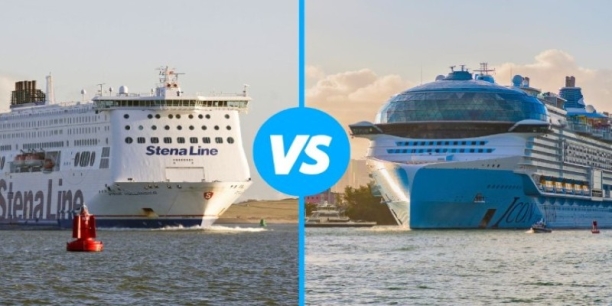
River ferries instead of tourist cruises ($2–$5 per ride). City lookouts instead of private observation decks (often free, while paid decks can be $20+). Municipal bike shares instead of branded tours ($5–$10 per day). Each swap preserves the view, trims the bill, and keeps your day flexible.
Neighborhood Scale
Think hyperlocal: a block of street food kiosks, a cluster of indie galleries, a free concert in a pocket park. String together short, walkable experiences—this is where budget travel activities compound value.
City Culture On A Shoestring (Without Feeling Like You’re Cutting Corners)
Big-ticket museums and ticketed performances are one way to see a city, not the only way. If your goal is depth rather than receipts, these tactics deliver.
Free Museum Access (The Smart Way)
Many cities offer free entry on certain days or on a rotating basis. In Washington, D.C., the Smithsonian museums are free all year; you can walk into world-class collections with zero spend (get practical visiting info). Elsewhere, free evenings or monthly "community days" are common—always check the museum’s official site or the city’s cultural calendar. When not free, general admission usually runs between $10 and $25.
University Ecosystems
Universities are cultural engines that often operate in plain sight. Public lectures, visiting artist talks, student theater, recital halls, and anthropology collections—often free or donation-based. Scan campus events pages (typically .edu) and humanities center listings before arrival.
Markets As Museums
Open-air markets are live anthropology. Test your palate with small tastes, note the price boards to decode what locals value, and photograph the color stories: spice mounds, produce pyramids, and neon signs. A morning at the market and a waterfront sunset together outperform many paid tours.
Street Art Districts
Street art is a living archive—local politics and humor in oversize color. Search the city + “street art map” or grab a printed map from tourism kiosks. Take time with one alley; the longer you look, the more layers appear.
Library Cards For Travelers
Many public libraries issue short-term guest access (photo ID required). That can unlock free museum passes, maker-space workshops, cultural databases, and quiet study rooms—ideal when you need Wi-Fi and a recharge.
Drop-in culture like this belongs on any list of affordable trip ideas, keeping days full without incurring extra costs.
Nature For (Almost) Nothing: Trails, Forests, Shores, Skies
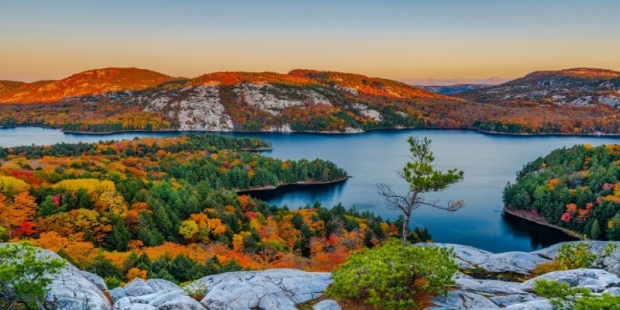
If the outdoors call, the entry price is usually the cost of transit fare and snacks.
National Forests & Public Lands
The U.S. Forest Service lists trailheads, scenic byways, campgrounds, and ranger tips—a master key for free or low-fee days outside the city. Start your planning with the official portal. These resources anchor many low-cost travel adventures throughout the year.
Coasts And Lakeshores
Public beaches, lakeside promenades, and riverwalks turn water views into hours-long experiences. Scan tide charts for tidepooling windows; dawn and dusk add wildlife and golden light to the same free panorama.
Urban Greenways
Pair rail trails or river loops with bike share for a day of exploration. Bike share systems allow 20–30 minute rides for $1–$3 per session, often bundled in daily caps.
Stargazing And Night Walks
City parks with late hours or nearby dark-sky preserves deliver cosmic returns. Bring a thermos, download a stargazing app offline, and let the sky do the storytelling.
Leave No Trace, High Value
Respect trail etiquette, pack out micro-trash, and give wildlife space. Good stewardship keeps these places open—and the cost is zero.
With thoughtful planning, nature becomes the backbone of budget travel activities, not a consolation prize.
Flavor, Not Fancy: Eating Well on a Budget (Safely and Joyfully)
You don't need white tablecloths to have a memorable meal. You need curiosity, a little homework, and a few sensible habits.
Street Food With Standards
Join the longest line, watch turnover, and scan for vendors who cook to order. "One snack at a time" lets you try a wide variety for the cost of a single sit-down entrée. It costs around $2–$10 per snack/meal. This approach is one of the most reliable and affordable trip ideas available anywhere.
Lunch > Dinner
Restaurants often run lunch sets with the same kitchen and smaller prices. Pair them with a picnic dinner—supermarket bread, local cheese, and seasonal fruit in a scenic public place.
Community Cooking
Look for community centers, guesthouses, or social enterprises that offer short, affordable cooking classes ($15–$30, including the meal). You gain a recipe and a story—prime low-cost travel adventures material.
Hydration Without Markup
Where tap water is potable, keep a refillable bottle. When it isn’t, buy the largest bottle you can carry and decant. Small choices keep budgets steady without compromising health.
Sweets As Strategy
A pastry shop + a city bench = dessert with a view for pocket change.
Movement That Doubles As Sightseeing
Transport is often your biggest “experience” line-item—make it work twice.
Transit As Tour
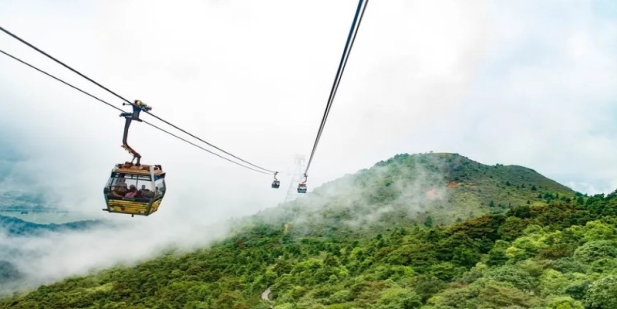
Some routes are intentionally scenic (coastal trams, river-hugging metros, and mountain funiculars). Day passes usually cost $5–$10, turning multiple rides into guaranteed savings—essential for budget travel activities in big cities.
Bike Share, Better
You don’t need a full-day rental. With bike share, 20– to 30–minute rides stitch neighborhoods together—from the park to the market, the market to Mural Lane, and Mural Lane to the waterfront. Most cities charge around $1–$3 per ride, or $5–$10 for a day pass.
Walk With Intent
Choose one axis (river to ridge; port to botanical garden). Follow it slowly, accept detours, and notice small textures: typography on shop signs, the species of street trees, balcony plants, and dogs’ fashion. The mind catalogues what the wallet never sees.
Festivals, Parades, and Public Rituals (for Little or Nothing)
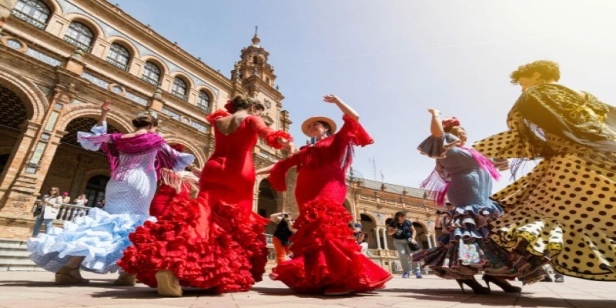
Calendars make cities visible. If you time it right, your day’s richness multiplies free of charge.
Civic Festivals
Founders’ days, neighborhood weeks, harvest parades—these are the city vouching for itself. Official tourism (.gov) pages list dates, routes, and access notes. Expect food stalls, music stages, and unusual hours for museums and parks.
Open-Air Cinema And Music
Summer evenings often mean free films in parks and squares. Arrive early with a blanket and a picnic basket filled with groceries. Jazz in a courtyard or classical music rehearsals in a church might sit on the same cultural calendar.
Volunteer Access
Many events need hands. A short volunteer shift can unlock staff-side vantage points, backstage stories, or meal vouchers—all legitimate, affordable trip ideas that widen access while giving back.
Learn On The Road (Without Tuition)
If your favorite souvenirs are skills and ideas, you’re already optimized for low spend.
Public Lectures And Workshops
Cultural institutions, libraries, and universities often advertise talks and readings that are free to the public. Hands-on sessions may include small materials fees—typically $5–$15 USD. That's a graduate seminar's worth of content for the price of a seat and attention.
Local Crafts, Small Stakes
Pottery drop-ins, weaving, or printmaking hours often cost $10–$25, well under typical souvenir prices—and you take home something handmade.
Self-guiding, seriously. Build your own three-stop theme: “three bridges,” “three modernist facades,” “three coffeehouses older than 100 years.” Themes give structure to budget travel activities and focus your lens.
Research Like a Pro (How to Find the Free and Nearly-Free)
Information is your strongest currency. Here’s how to gather it efficiently.
Start With Official Calendars
City tourism bureaus and cultural ministries maintain event grids with free days, public rehearsals, and neighborhood festivals. Because they’re official, they’re also up-to-date—ideal for pinning affordable trip ideas to real dates.
Use Local Keywords
Search in the local language for “free day,” “community concert,” “open studio,” “public lecture,” “market day,” and equivalents. Translate your queries and you’ll see more authentic options.
Library & Museum Newsletters
Sign up a month before travel, then filter. Emails frequently bundle free tours, open-air cinema, family days, and late-night openings.
Map Layers
Save green areas (parks), blue areas (waterfront paths), yellow stars (markets), and purple pins (free museums) on your map app. The clustering effect reveals where to spend days without spending money—your personal atlas of low-cost travel adventures.
Ask At The Right Counters
Hotel lobbies can be tour-heavy. Librarians, information desks at public galleries, and park ranger stations tend to focus on public-good programming and offer free options.
Save Money Systematically (So You Don’t Have To Think About It Later)
Frugality works best when it’s baked into your setup.
Connectivity
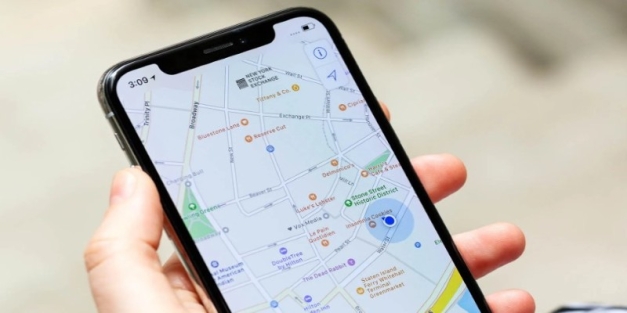
Offline maps, downloaded transit apps, and a local eSIM prevent costly data scrambles. Many libraries offer free Wi-Fi, providing a quiet space for you to regroup and recharge.
Payments
Foreign transaction fees add up invisibly. Use a fee-free card and a debit card that reimburses ATM fees to keep cash withdrawals efficient.
Laundry
A small sink stopper and travel detergent convert a bathroom into a laundry room. Air-dry overnight; consider purchasing fast-dry fabrics to facilitate quick outfit rotation. Fewer clothes = fewer baggage fees.
Water & Snacks
A refillable bottle and a small daypack for fruit or nuts defend against impulse purchases. It’s a performance enhancer for budget travel activities that keep you outdoors.
Move Less, See More
Each relocation generates transport, check-in times, and incidental spend. Staying longer reduces costs and increases your intimacy with the place.
Experiences Beat Things
If you need a philosophy to center your choices, know that research consistently shows experiential spending yields more durable well-being than material purchases. Keep this lens on every decision; it’s the soul of affordable trip ideas.
Safety And Respect When You’re Saving Money
Cutting costs is smart; cutting corners isn’t.
Respect Access
Don’t trespass for views or crowd fragile ecosystems for photos. Your cheapest option is usually the ethical one: public terraces, marked overlooks, and maintained trails.
Personal Security
Free doesn’t mean empty. Crowds create opportunities for pickpockets. Keep essentials in a zippered inner pocket, and avoid wandering down unlit side streets at night.
Health
If local water isn’t safe, buy it. If a food stall ignores hygiene basics, skip it. “I got a deal” is not a medical plan.
Consent And Culture
Performances, ceremonies, and prayer spaces may be public but still require sensitivity. Observe first, ask before photographing faces, and follow posted norms.
Outdoor Activity Deep Dive: How To Spend A Whole Day For Almost Nothing

Let’s layer detail into a single outdoor theme—no “itinerary,” just modular blocks you can mix and match anywhere.
Trail Selection (Precision)
Use official park or forest websites for the most up-to-date information on conditions and difficulty ratings. The U.S. Forest Service site aggregates maps, closures, and ranger notes you won't get from generic listicles. Pick a mileage that matches the daylight and your pace; remember to linger longer in beautiful places.
Transit To Trailhead (Frictionless)
Many trailheads sit on bus routes from regional hubs. If not, consider taking a one-way rideshare up and hiking back toward town to eliminate "double transit." If you must rent, pair hikers to split the cost.
Gear Minimalism (Safe & Cheap)
You need grip (shoes with tread), weather shell, water, calories, and a phone in airplane mode. Borrow poles from your accommodation or pick up a $2 stick with a story. For first aid, bandages, and blister care, a heavy kit beats a day hike.
On-Trail Value Stacking
Give yourself assignments: identify three plants, listen for three bird calls, find a geology clue, sketch one vista. This transforms a free walk into an active, memorable, low-cost travel adventure.
Post-Hike Recovery
Public beaches, river stones, or a municipal pool ($3–$7) restore the legs. Follow with a grocery picnic ($6–$12) during golden hour—your most photogenic, least expensive meal of the day.
Culture Deep Dive: A Full Day of Art and Ideas Without Tickets
Again, Modular, Not Prescriptive
Morning: civic art. Begin with public sculptures, murals, and memorials—outdoor galleries with no admission barriers. Read plaques. If you don’t recognize a name, search and learn: that five-minute rabbit hole leverages your entire walk.
Midday: Free Collections
Cities with free admission or rotating free days allow you to browse a wing or two without the "I must see it all" stress. Focus on one gallery, one movement, one artist.
Afternoon: A Talk Or A Reading
Universities and cultural institutes fill calendars with visiting scholars and authors. Use .edu or .gov event pages to find something to do the week you arrive. You'll meet residents who care deeply, often the best people to ask what else is happening—pure budget travel activities intelligence.
Evening: Open-Air Cinema Or Rehearsal
Parks departments often run film nights; churches and conservatories open rehearsals. Bring a sweater and snacks; this is a high-signal, low-spend culture.
Waterfronts: Turn A Shoreline Into A Day-Long Experience
Walk The Working Edge
Ports, fish markets, and ferry slips pattern a city’s economy. From there, follow the waterline paths for bridges, boathouses, and skyline angles that cost nothing and look like postcards.
Ride A Public Boat
Public ferry rides typically cost the same as a bus fare ($2–$5), offering high-value views at a fraction of the price of private tours ($20–$50+).
Tide Charts & Micro-Ecosystems
In coastal towns, tidepooling offers a precise and magical window for low-cost travel adventures. Respect tide timetables and handle nothing alive; the reward is alien beauty for free.
Frequently Overlooked Free (Or Nearly Free) Wins
Botanical Gardens’ Free Hours
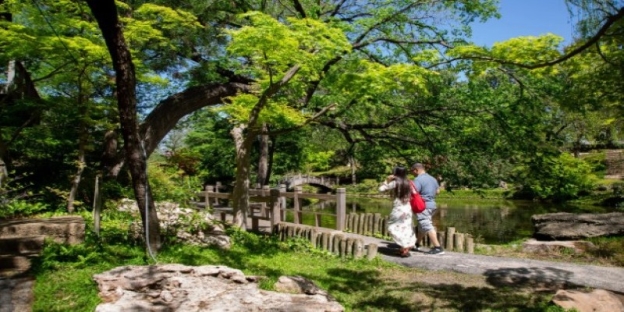
Admission outside of free windows is often $5–$15, so catching a free morning or evening saves quite a bit—without sacrificing experience.
Religious Architecture
Cathedrals, mosques, synagogues, and temples often allow respectful visitors outside prayer times. Dress modestly, follow signage, and remember you’re a guest.
City Halls And Courthouses
Public buildings can be architectural jewels. Guided tours—if offered—are typically free and rich in local context.
Cemeteries
Historic cemeteries are sculpture parks and social history lessons. Download a map; the engraving styles alone are a quiet afternoon’s study.
Maker Fairs And Open Studios
Peek behind the curtain: artists’ districts and maker warehouses open doors during monthly art walks. The point is the conversation; buying is optional.
The Right Kind Of Splurge (So Your Budget Still Wins)
Strategic splurging is part of great affordable trip ideas. Spend where the experience is uniquely local, time-sensitive, and hard to replicate at home—such as a hammam in Istanbul for $20 to $40, a thermal bath in Budapest for $15 to $25, or a dawn snorkel on a rare reef for $35 to $60. Save by pairing that splurge with transit-based sightseeing, a market lunch, and free evening culture. The net cost stays humane; the day stays unforgettable.
Mindset: Your Best Tool For Stretching Value
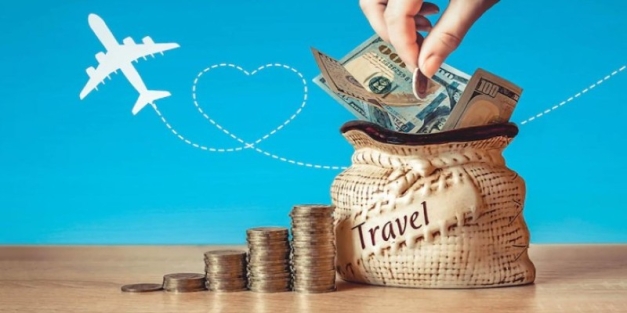
Be A Participant, Not An Observer
Sketch the skyline, record ambient sound, learn three dance steps at a public festival, ask artisans how a tool works. Participation transforms ordinary settings into unforgettable experiences—budget travel activities elevated by focused attention.
Slow Down
Rushing makes money the solution to every problem. Slowness lets public options surface: a busker you’d have missed, a pop-up exhibit setting up, a small parade turning the corner.
Talk To Humans
"If you had one free afternoon here, what would you do?" Librarians, park rangers, docents, and campus staff will offer you gold, typically free, and always genuine.
Your Compact Checklist
- Lock in transit day passes; mark free museum days and public events.
- Map markets, waterfronts, parks, universities, libraries, and street-art corridors.
- Decide on a daily theme (such as nature, food, design, or music) to focus your search on low-cost travel adventures.
- Pack for independence: a bottle, snacks, layers, offline maps, and a small travel kit for laundry.
- Default to experiences; let the budget travel activities choose the souvenirs (photos, sketches, recipes, new skills).
Turning Small Budgets Into Big Memories
Travel isn’t a contest of receipts; it’s a practice of attention. With budget travel activities as your compass, affordable trip ideas as your planning toolkit, and low-cost travel adventures as your fuel, you can wander widely—through museums that cost nothing, trails that cost little, concerts under open skies that cost less than a coffee.
Select one public space to explore in depth. Ride one transit line end-to-end. Learn one local recipe. Talk to one librarian, ranger, or docent. Do these things and you'll leave with more than photos. You'll leave with a place that feels a little bit like yours—and that's the best budget win of all.
Was this helpful? Share your thoughts
- Learned practical methods
- Solved my questions
- Inspired new ideas
-
![The Best Way To Get A Seat Upgrade On Your Next Flight]() The Best Way To Get A Seat Upgrade On Your Next Flight
The Best Way To Get A Seat Upgrade On Your Next Flight -
Flying economy doesn’t always mean you’re stuck with cramped legroom and no perks. With the right approach, you can often move up to premium economy, business, or even first class without paying the full ticket price. Airlines want to fill those upgraded seats, and if you know how to position yourself, you can take advantage of their systems.
Explore More
-
![Top 23 Mountain Destinations For Adventure Seekers]() Top 23 Mountain Destinations For Adventure Seekers
Top 23 Mountain Destinations For Adventure Seekers -
Ever wonder why some trips change you—and others just fill your camera roll? The answer often lives above the tree line. This guide explores mountain travel destinations, providing practical details such as seasons, terrain, access, safety, culture, and how to select challenges that feel well-earned.
Explore More




